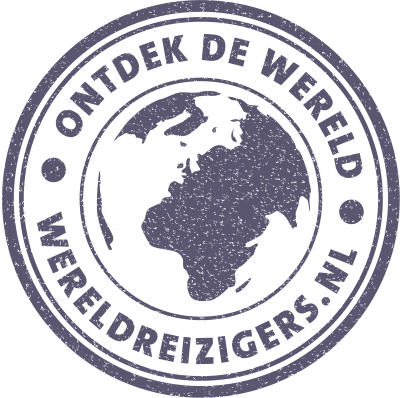Who dares to drive more than 3.000 kilometers on a scooter through East Africa? Visiting mountain gorillas? Scooter safaris (does this word exist?) in five National parks† To admire lions, buffaloes, hippos and elephants up close, among other things. My name is Eric and I like to travel around on a scooter. Read here part 13 of the unique report of an amazing scooter adventure Uganda, Rwanda en Kenya† In the thirteenth part I travel from Purongo to Kitgum, a ride of about 174 kilometers.
Uganda has stolen our hearts more than once and as far as we are concerned it is a travel destination that belongs on the bucket list of every world traveler. Find out why Uganda is called the pearl of Africa.
A trip through Uganda will be one you will never forget. Spot the tree-climbing lions, meet thousands of elephants, come face to face with Mountain Gorillas in the jungle and get to know the beautiful culture.
A night in 'Amsterdam' does wonders
The pain in my foot is alright. Although the wound looks terrifying. In the guesthouse with 12 rooms named after world capitals, I was allowed to spend the night in Amsterdam. I liked it.
Armed with a towel, I look for the communal shower. On closer inspection, the shower turns out to be just a concrete cubicle. I have to bring the water myself. For that I pick up a jerry can at the reception.

Fresh and fairly fruity, I walk on the verge along the asphalted road in Purongo. Purongo is like hundreds of other villages in Uganda. It is not much more than a row of houses, huts and shops on a main road. A Ugandan version of a settlement from the American Wild West.
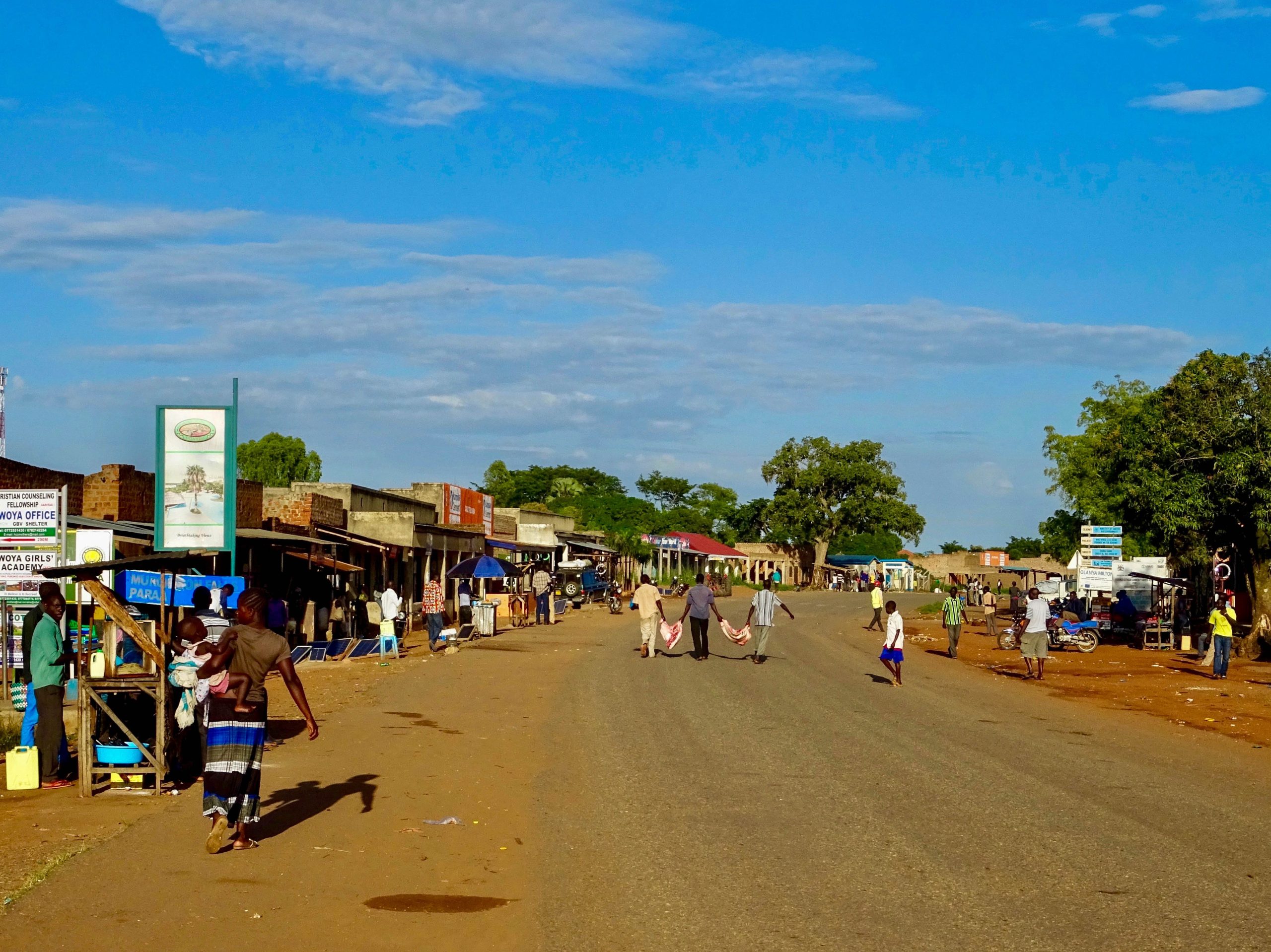
The road through Purongo heads north to pakwach where you can turn right towards the Congolese border or further towards northern Arua and arrive in Juba, the capital of South Sudan. To the south, like so many other Ugandan highways, the road ends in the capital Kampala.

It's time for breakfast. At a chapati bakery I order a rolex (rolled eggs) deluxe. Onion, tomato, bell pepper and three eggs are fried with the chapati dough. It tastes great and is very filling. Meanwhile, the local mechanic is busy patching up my scooter after yesterday's accident. He does some minor repairs here and there.
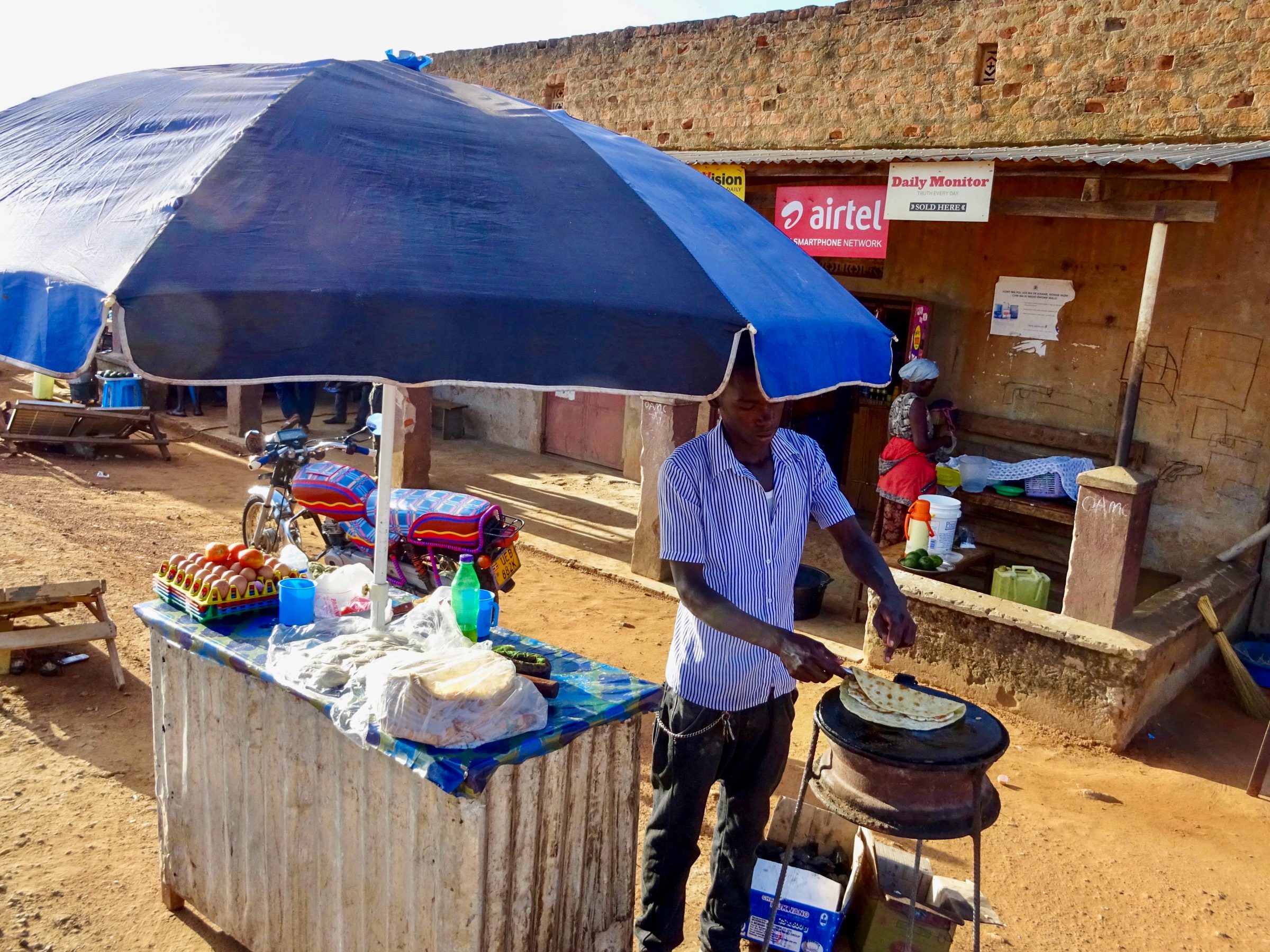
Welcome to Acholiland
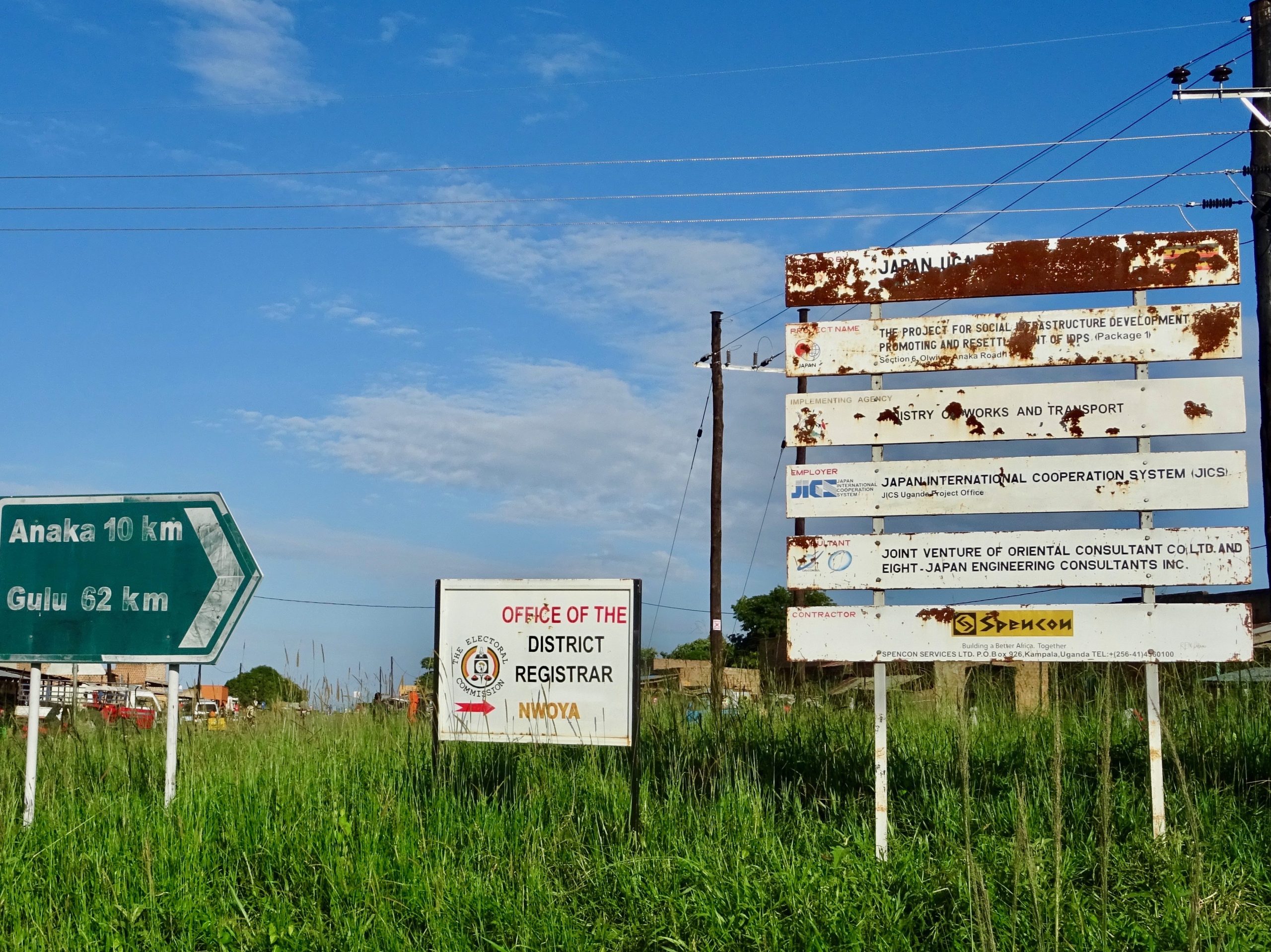
After yesterday's accident I don't feel like an hour-long ride on the scooter. I'm sticking to a 80-mile trip to Gulu. Just south of Purongo I take the exit towards Gulu. On a sign along the road I read about work in progress. The well-maintained murram road (red clay sand) is asphalted for its entire length to Gulu.
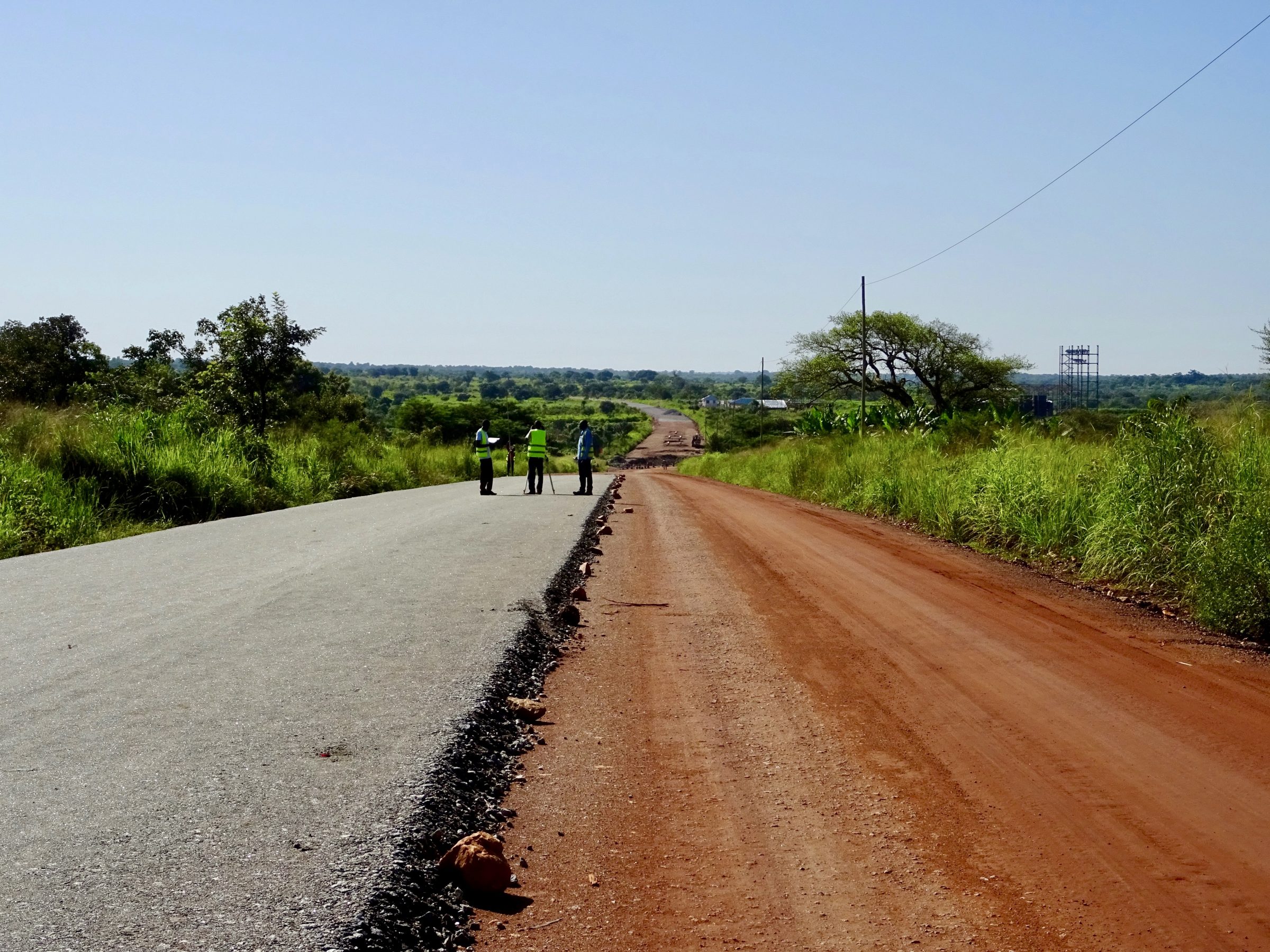
After 15 kilometers I stop in the Ugandan western village of Anaka. I buy a bottle of soda in a shop. The owner warmly welcomes me to the land of the Acholi: 'Apoyo bino.' I answer in Swahili: 'Asante.' Ugandans generally understand Swahili. "Apoyo is thank you in Acholi." The man urges me to at least memorize 'kop ango', 'kop pe' and 'apoyo'. Literally translated: 'What's the problem', 'no problem' and 'thanks'. 'In Gulu, Kitgum and Kidepo they speak Acholi. They really like it when a mzungu greets them in Acholi.'

Northwestern Uganda is also known as Acholiland. About one and a half million Acholi live here. About 50.000 live across the border in South Sudan. Many of them have since fled here because of the civil war. The rural Acholi live in clusters of thatched huts. On my way to Gulu I meet them with some regularity.
Gulu: a city full of refugees and aid workers
In barely two hours I reached Gulu. Gulu is by Ugandan standards a large city with more than 150.000 inhabitants. Many are or were once refugees. From the 1960s onward, Congolese and Sudanese fled wars in their country. From the 1990s onward, local refugees were added. They fled from Joseph Kony's Lord Resistance Army. Today they are residents of South Sudan fleeing the civil war. This type of refugee flows naturally have a different flow, namely that of aid workers.

I am not surprised that many signs in Gulu refer to government agencies and international aid organizations (NGOs). I see whole zippers standing next to each other. Of course, the magic word 'development' is not missing.
The long-standing presence of refugees in Gulu has also provided a significant number of aid workers. And the latter group usually does not stay in a run-down guesthouse. Hotel Bomah is where she and the Ugandan elite prefer to stay. After my misadventures from the day before, I report to the reception for a room. Then I pick up a bath towel and settle down on a sun lounger by the pool. Take a break.
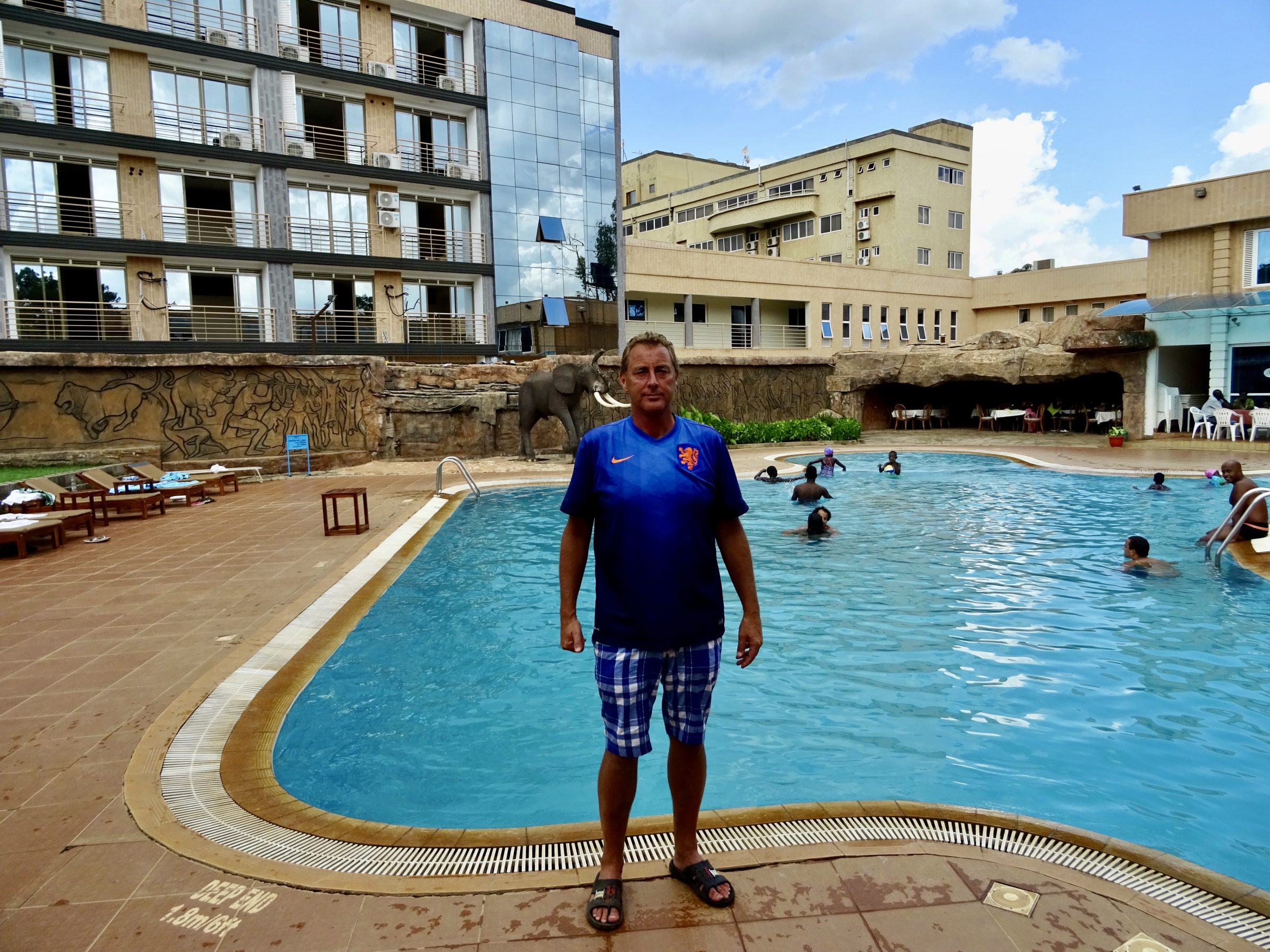
Next stop: Kitgum
Only the first kilometers of the more than a hundred from Gulu and Kitgum cause some delay. Work is underway on the last kilometers of asphalt between the two cities. On the other 98 km there is a proverbial billiard cloth. An asphalt road can be that smooth and fine.

The area is as beautiful as ever with lots of greenery and many Acholi settlements. I take a break at a school complex in the village of Atanga. Just to stretch your legs and get some curious looks.
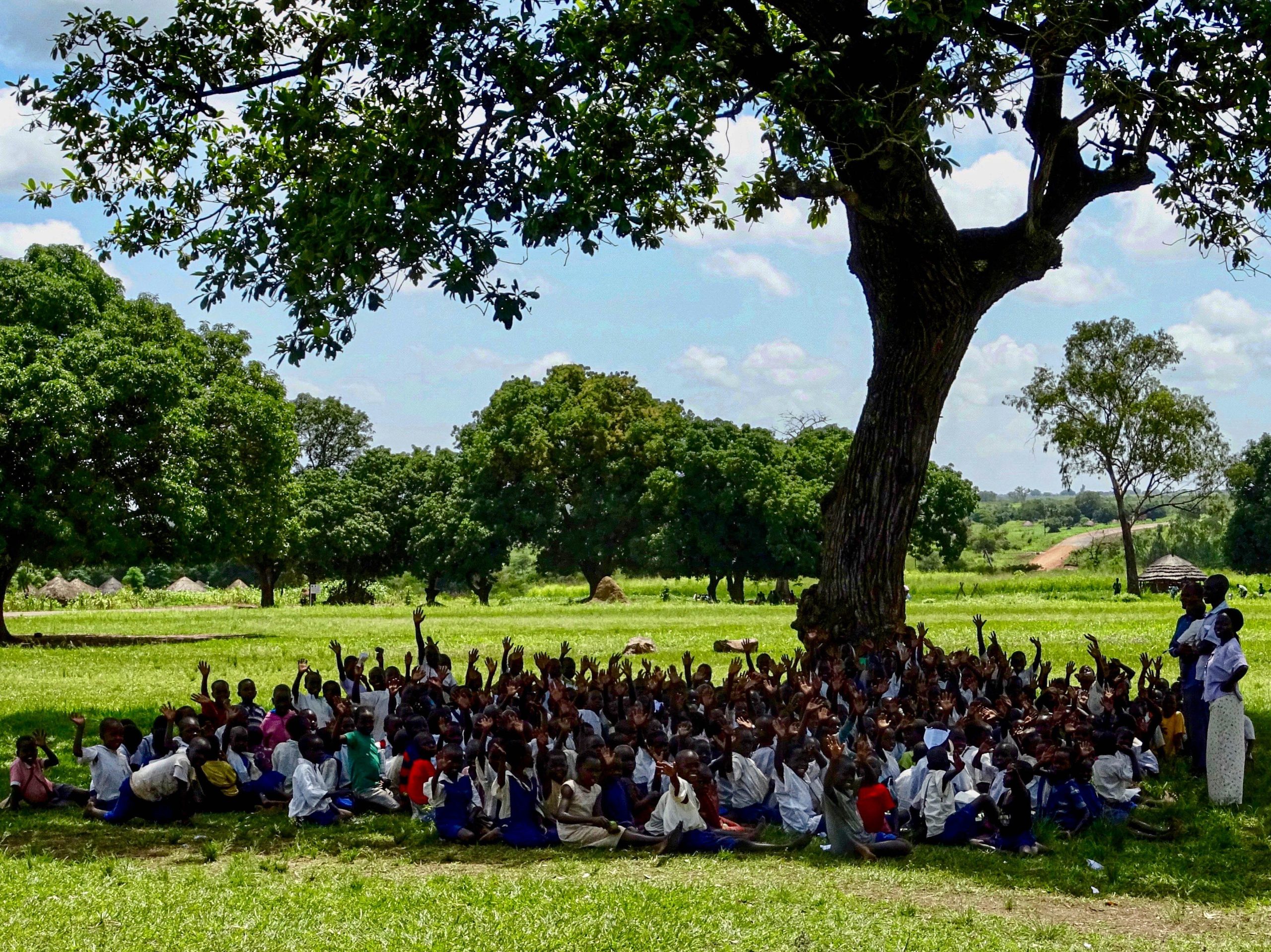
A hundred children who are being taught under the shade of a tree wave enthusiastically. On a blackboard I read today's attendance figures; August 11, 2017: 610 children.

At three o'clock I drive into Kitgum. In terms of size, Kitgum is one third of Gulu with 50.000 inhabitants. I hear from the market that the number of refugees from South Sudan in Kitgum is very high. However, they are accepted with virtually no problem. The Ugandan government even gives them a piece of land. I'm surprised the locals are so tolerant. They don't even have it that wide.
A market vendor explains. “The refugees from South Sudan are our brothers. They speak Acholi like us and have it very bad. You can't leave it out in the cold. Yes, some people here sometimes complain because they inadvertently drive up the prices.'
She explains the criticism as follows:
'They speak Acholi like we do, but they do have an accent. On the market here, they immediately recognize these refugees. The merchants know they get money from the government. So what do some do? They increase the price of a chapati from 1.000 to 2.000 schillings. That's double the price. Refugees often do not dare to negotiate. Thus prices go up. Do you understand?'

Also in Kitgum there are rescuers and therefore also a hotel with a swimming pool. After that I will rest in preparation for tomorrow's tough stage to Kidepo National Park.
Uganda has stolen our hearts more than once and as far as we are concerned it is a travel destination that belongs on the bucket list of every world traveler. Find out why Uganda is called the pearl of Africa.
A trip through Uganda will be one you will never forget. Spot the tree-climbing lions, meet thousands of elephants, come face to face with Mountain Gorillas in the jungle and get to know the beautiful culture.
Plan your holiday to Africa here
- Itineraries you can compare + request quotes Africaplus, Africa tailor-made, Djoser, king monkey, rickshaw travel, sawadee en shoestring.
- Flight tickets for Africa you book through Skyscanner.
- Hostels, Hotels and Resorts in Africa you book Booking.com.
- Rental cars : Sunnycars en rental cars.
- Tours and Activities in Africa you book through GetYourGuide.
- travel items such as suitcases, bags and more you can buy at Bol.com.
- SIM cards for Africa you buy extra International sim.
- Parking at the airport you can arrange via Parkos, park care of iParking.













